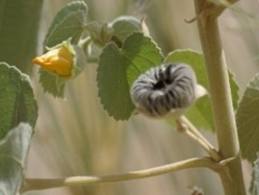Studies on Physicochemical Evaluation of Leaves of Abutilon Muticum DC
Abutilon muticum DC. (Malvaceae) are traditional medicinal herb used for analgesic, anthelmintic, hepatoprotective, and hypoglycemic properties. The present paper deals with the physicochemical evaluation of leaf of the plants. In this study various physicochemical studies such as ash value, LOD, FOM, extractive values are reported.
The whole 4 pages article is available for download here.
Medicinal plants are used in the treatment of much life threatening disease. In almost all the traditional system of medicine, the quality control aspect has been considered from its inspection. However, in modern concept it require necessary changes in their approach by that way concrete method of quality control in terms development of modern methodologies. Thus, today quality assurance is thrust area for the evaluation of traditional used medicinal plants and herbal formulation.
A. muticum DC is a hairy herb commonly belonging to family Malvaceae. It is found abundantly in the hotter parts of India but it occurs throughout the tropica, subtropica, and Ceylon. It grows as weed and found abundantly in wastelands from seashores 1,200 meters high in India and in sub Himalayan tracts. It is herbaceous, or shrubby, softly tomentose plant, stem is round, often tinged with purple color. The leaves are 9 by 5 cm up to petiolate, ovate to orbocular –cordate, acuminate, and toothed. Flowers are borne solitary in long jointed and axilary pedicels. Calex lobes divided in the middle and apiculate. Corolla is yellow or orange yellow opens in the evening. Carpels are 15-20 in number. Fruits are hispid, scarcely longer than the calyx and awns are erect. Seeds are 3 -5, ovoid, kidney shaped, dark brown black, tuberceled or with minutely stelleate hairs. Tap roots, fairly long with a number of lateral branches: 1.5-2 cm in diameter, light brown, outer surface smooth with dot like lenticels. Bark thin and can easily peel off, it has feeble odor, astringent and bitter tastes.

